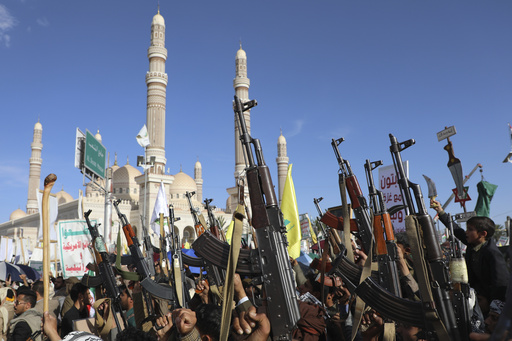Yemen’s Houthi Rebels Evolve into a Significant Military Force
Yemen’s Houthi rebels have changed remarkably from a local armed faction with limited abilities to a formidable military force, largely due to backing from Iran and other militant groups, according to a recent report from U.N. experts. The 537-page document has been submitted to the U.N. Security Council, highlighting how the Houthis have capitalized on the recent Israel-Hamas conflict in Gaza to enhance their position within Iran’s so-called “Axis of Resistance.” Their efforts appear geared toward boosting their popularity both in the region and internationally.
In support of Iranian-affiliated Hamas fighters, who launched unexpected attacks in southern Israel on October 7, 2023, initiating the current Gaza conflict, the Houthis have been actively targeting maritime vessels in the Red Sea and Gulf of Aden. These actions have significantly disrupted global shipping in a strategically important area. While the Houthis have claimed they are specifically aiming at Israeli-linked vessels, investigations from the U.N. panel revealed that their attacks have been indiscriminate.
Analysis from data collected by the International Maritime Organization and intelligence from the U.S. and U.K. showed that from November 15, 2023, to July 31, 2024, at least 134 attacks originated from regions controlled by the Houthis against commercial shipping and warships from both the U.S. and the U.K. The U.N. experts indicated that the group’s shift towards maritime attacks has amplified their influence in the region. They noted that the scale of assaults against civilian vessels by the Houthis has reached levels not seen since World War II.
The report highlights the Houthis’ usage of a newly identified ballistic missile, the Hatem-2, during their operations. The five-member panel of U.N. experts—specialists in arms, finance, regional affairs, international humanitarian law, and armed groups—has expressed concerns about the growing collaboration between the Houthis and al-Qaida affiliates, including connections to the al-Shabab group in Somalia.
Since taking control of Yemen’s capital, Sanaa, and much of the northern regions in 2014, the Houthis have been embroiled in a civil conflict against Yemen’s internationally recognized government, which is supported by a Saudi-led coalition. The expansion of this conflict into a wider regional dispute has intensified following the October attacks, further diminishing prospects for peace negotiations.
Experts estimate that the Houthi fighting force has surged from approximately 30,000 in 2015 to an estimated 350,000 in 2023, up from 220,000 in 2022. The report emphasizes this transformation, outlining how the Houthis have grown from a localized uprising to a potent military presence with capabilities extending far beyond their immediate territories.
The report attributes the Houthis’ evolution to substantial military material transfers and training from Iran’s elite Quds Force, as well as support from Hezbollah and Iraqi military experts. Analysis suggests that the Houthis lack the capacity to independently produce advanced weapon systems such as ballistic and cruise missiles, drones, and air defense systems, indicating a heavy reliance on foreign assistance.
The scale and variety of military equipment, alongside financial backing and combat training provided to the Houthis, is unprecedented, according to the report. The U.N. experts noticed striking similarities between Houthi-used military hardware and those used by Iran and its associates within the Axis of Resistance, which includes groups like Hezbollah and Hamas.
Moreover, joint military operation centers have emerged in Iraq and Lebanon to facilitate collaboration among Houthi representatives, aimed at coordinating collective military efforts. Domestically, the Houthis have ramped up military engagements against the Yemeni government, creating a fragile internal situation that could flare up with even minor provocations.
In addition, the Houthis have increasingly recruited Yemeni youth, including young children, often through coercive means involving Ethiopian migrants. Reports indicate that they have mobilized boys as young as 10 or 11 years old, utilizing tactics such as recruitment sermons in schools, even when met with parental objections. Instances of child recruitment reportedly rose following the outbreak of war in Gaza and subsequent airstrikes by the U.S. and U.K. The Yemeni government documented 3,298 incidents of child recruitment in the first half of 2024 alone, with these children used for various military purposes, including as human shields, spies, and in direct combat roles.


